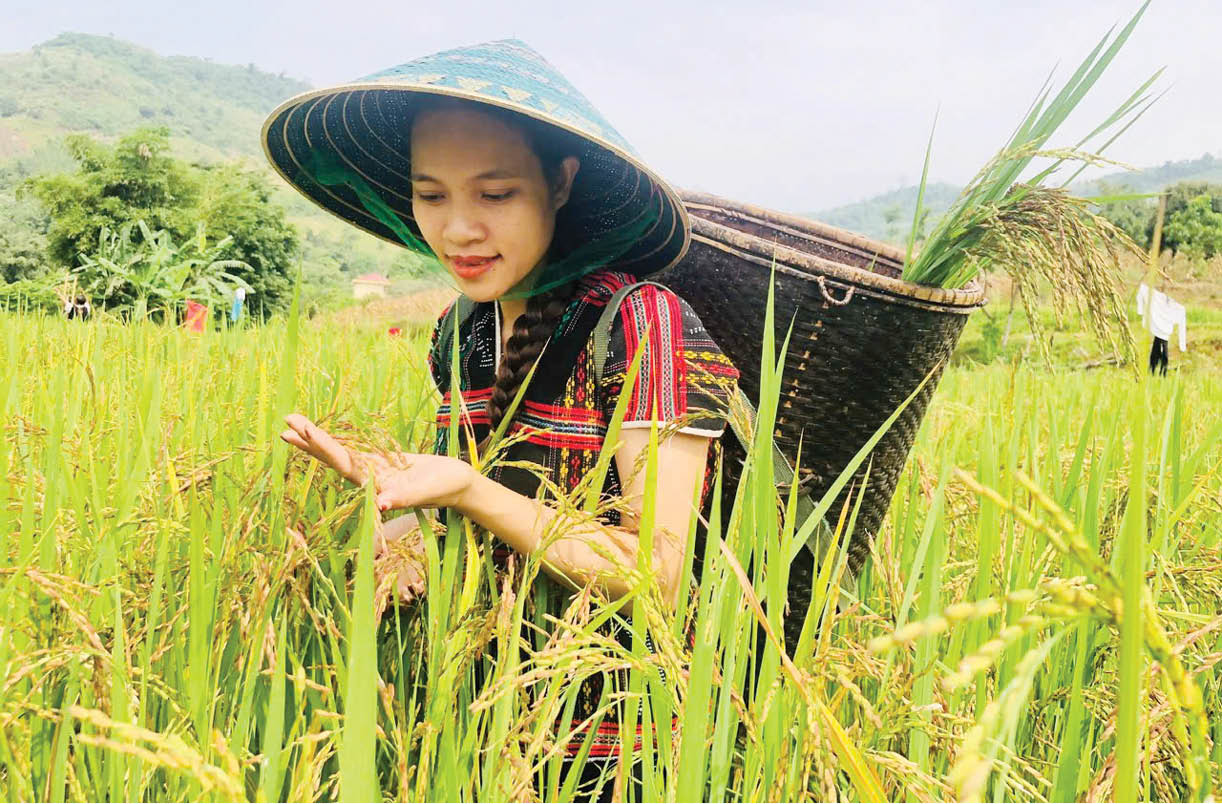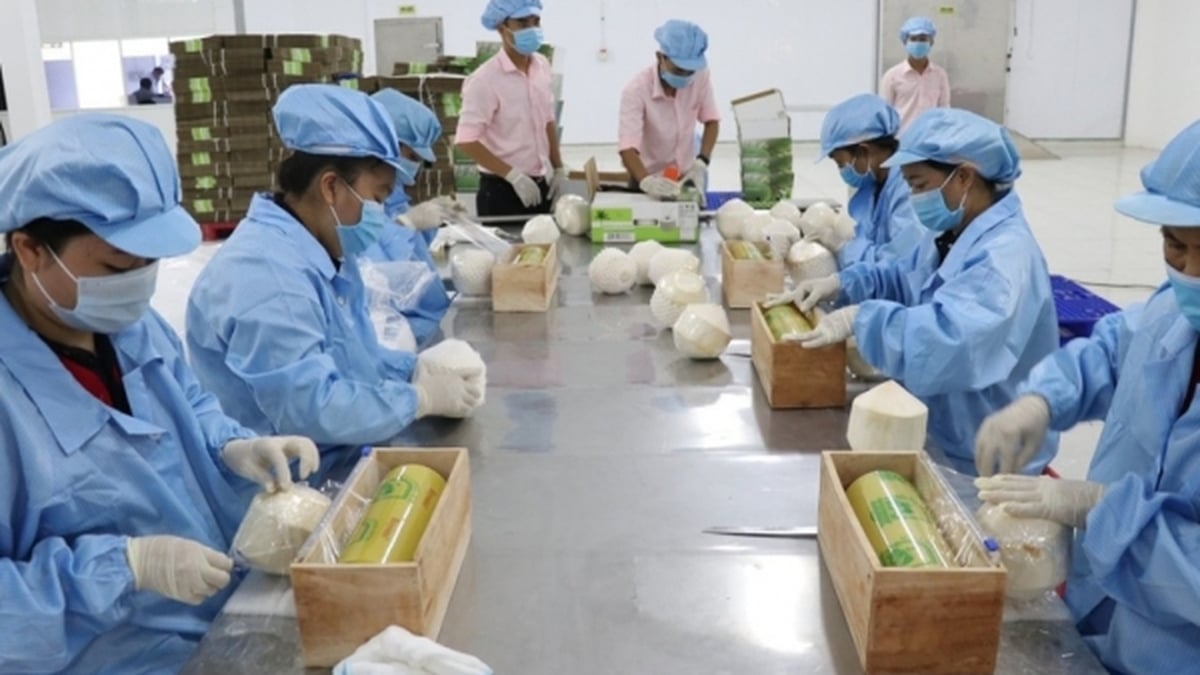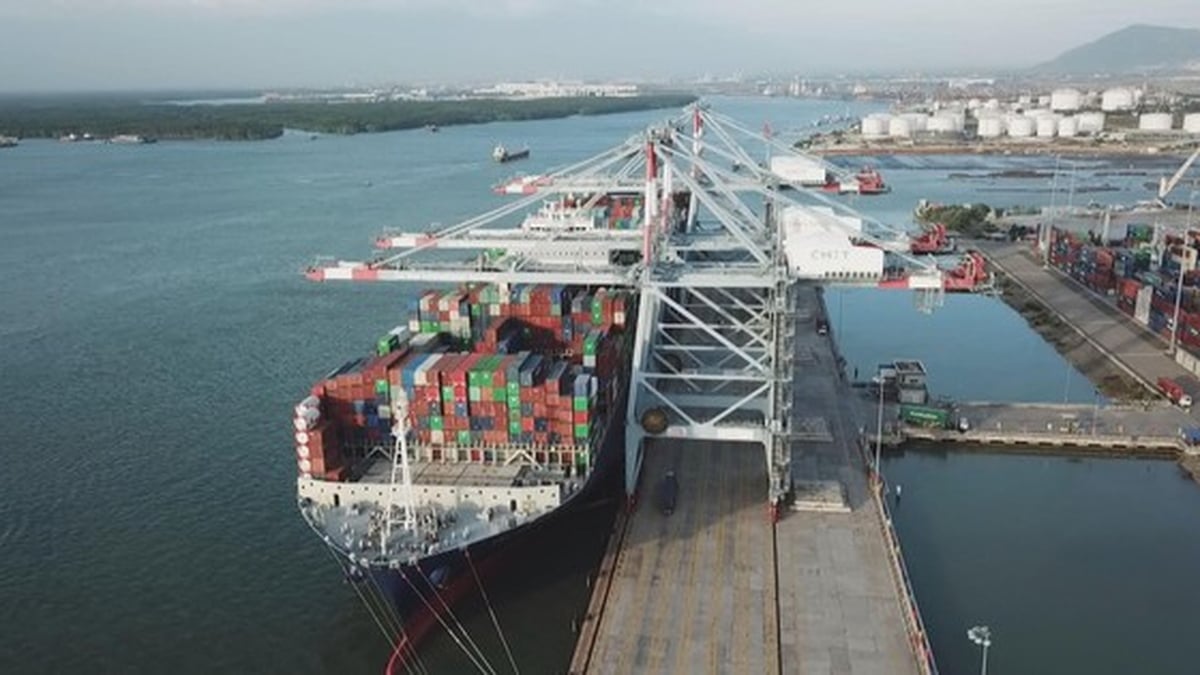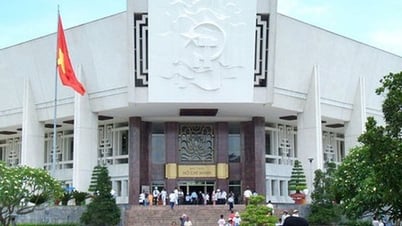 |
| Le Thi Trung Nhi on the rice field. The surplus is due to her care and fertilization. |
On the other side of the long Pe Ke Pass is Hong Thuy Commune (old), a particularly difficult border area. Relying on slash-and-burn farming, most ethnic minorities earn their living from rice, corn, cassava..., and their lives are still full of deprivation.
Also earning a living by farming, Le Thi Trung Nhi understands very well the difficulties of her locality. The young Pa Co woman is always wondering how to develop the economy and increase income. After much thought and consideration, Nhi boldly brought Ra Du rice - a precious rice variety of A Luoi, which is only suitable for hilly areas, to produce in wet rice fields.
Ra Du rice is a specialty of the A Luoi highland people, delicious, considered as "sacred rice", precious rice, associated with many rituals of worshiping Giang. Although rare, not many people are interested in Ra Du rice now, because Ra Du rice has low yield and is prone to crop failure. Moreover, due to its growth characteristics, only newly reclaimed hills can produce high yield, the yield decreases later.
“Initially, because I wanted to join hands in preserving the precious rice variety of my fellow countrymen, I always reserved a part of my field to grow Ra Du rice. From 1 sao, I expanded it to 5 sao. Then, realizing that the economic value of Ra Du rice was very high, with the price three to four times higher than normal rice, I decided to expand production,” Nhi shared.
In 2020, a young Pa Co woman decided to move Ra Du rice from the fields to the flooded fields. She and her husband rented an excavator, dug up the soil to make a field, and then brought in water. Ra Du was planted in the fields starting in May and harvested in October. The rice had to endure the summer drought and the autumn floods. As for Ra Du in the flooded fields, it was harvested from January to April.
“Ra du rice grown in wet rice fields has a yield of 8-10 bags/sao, while Ra du rice grown in dry fields only has a yield of 5-6 bags/sao. Not to mention that upland rice lasts for 4-5 months, while Ra du rice grown in wet rice fields only takes about 3 months. Each kilogram of Ra du rice costs from 50,000 to 60,000 VND, sometimes even higher,” Nhi excitedly said. With such positive results, Nhi plans to expand the area of Ra du rice grown in wet rice fields in the near future.
As a pioneer in Hong Thuy (old) growing Ra du in flooded rice fields, Nhi could not avoid the concerns of the locals. “Even my mother-in-law was worried and told me to be careful not to lose all my efforts,” Nhi said. However, with her passion and efforts, the young girl has reaped “sweet fruit”. Nhi’s joy multiplied when in the area, many families have also grown Ra du rice in flooded rice fields to increase their income.
In the past, rice output was difficult, but now, thanks to the association with agricultural cooperatives, the output is guaranteed, so Ra Du rice growers are very excited. Trung Nhi also regularly brings Ra Du rice to participate in fairs to introduce agricultural products as a consumption channel.
The Pa Co girl smiled and revealed that, despite having graduated from university, Nhi still had a “fated relationship” with the fields. “Some people say that after studying, I will still go back to farming, wasting money and effort. But for me, thanks to studying, my thinking has changed, I know how to farm more effectively. Most importantly, I have found joy and hope right on my hometown fields, from preserving and developing precious rice varieties, as a way to develop the economy, spread the spirit of self-reliance and preserve the cultural identity of the highlands,” Nhi expressed.
According to Mr. Hoang Van Doi, Chairman of the Farmers' Association of Hong Thuy Commune (formerly) (now Mr. Doi is an officer of the Department of Culture and Society of A Luoi 1 Commune), Le Thi Trung Nhi is an example of spreading the spirit of diligence and creativity in production labor so that people in remote border areas have the motivation to overcome difficulties and make more efforts in economic development.
Source: https://huengaynay.vn/kinh-te/dua-lua-ra-du-xuong-ruong-nuoc-156274.html






































































































Comment (0)